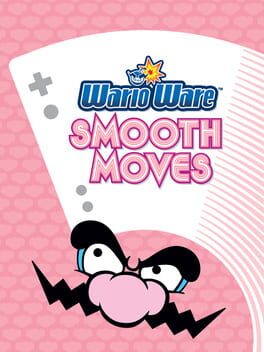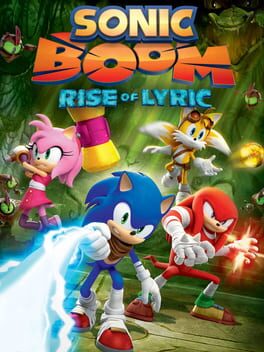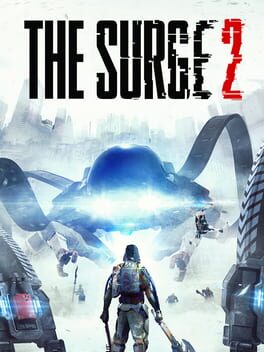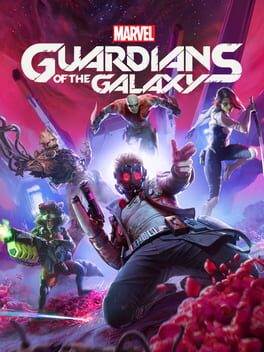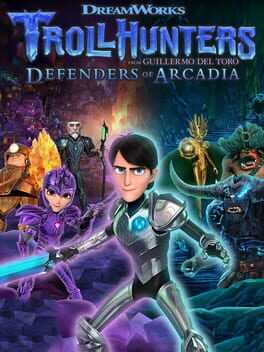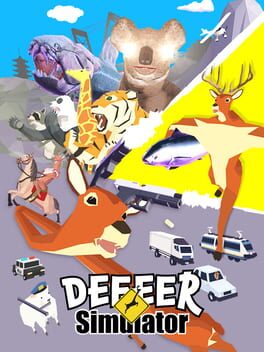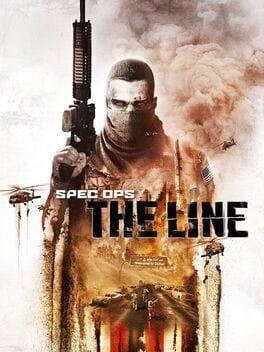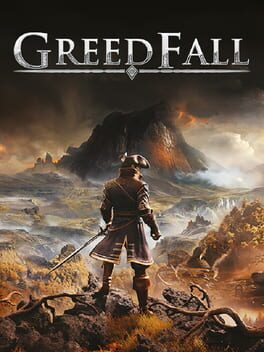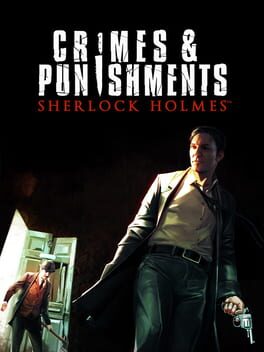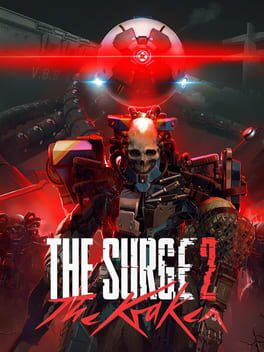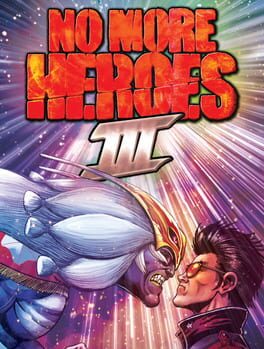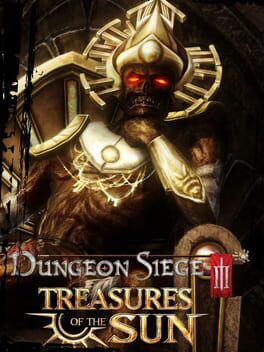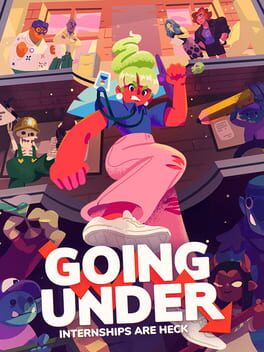TheQuietGamer
4097 Reviews liked by TheQuietGamer
Fire Emblem Heroes
2017
Several days ago I had a sudden, conflicted whim. On the one hand, I was overwhelmed by a long-suppressed appetite for Fire Emblem's particular brand of tactics gameplay; on the other, I wanted to play a game in said franchise that was new to me but without feeling bad about potentially not sticking with it for the long term. For the first time, I was in tune with the Venn diagram of appetitive desire that has kept Fire Emblem Heroes in business for nearly five years.
In retrospect, it's surprising this didn't happen sooner. I'm an easy mark for free-to-play mobile games when they're branded with Stuff I Already Like™, and I've burned more money at the altars of games like Marvel Future Fight and Pokémon Shuffle than I'm willing to admit. Considering that Fire Emblem is one of my favorite video game franchises (despite the fact that Awakening is the only entry I've sunk a truly substantial amount of time into), you would think I'd have been a day-one player.
But the combination of free-to-play mechanics and Fire Emblem gameplay has always seemed contradictory to me. I'm the type of FE player who plans battles meticulously and leaves combat animations on, in order to amplify the role-playing experience. Battles are long, hard-won affairs that follow their own emotional arcs, many of them of my own making. The unique appeal of the franchise, for me, is feeling like an actual military tactician who charts out a battle plan, then watches with equal measure of pride and horror as my friends and loved ones attempt to execute it. The stakes could not be higher.
The absence of permanent death, critical hits, and other chaotic-neutral gameplay elements certainly is one factor impeding that sense while playing Fire Emblem Heroes, but even more than that it's the amount of content to complete each day. There are the main story levels and their side missions, which together appear to number in the hundreds, but which the game also discourages you from playing in favor of 24-hour Special Maps and the Training Tower. There are limited-time events such as Hall of Forms (in which you control pre-built characters) and Mjölnir's Strike (a tower-defense mode). There's asynchronous PvP in Aether Raids as well as the Coliseum. The latter area includes modes like Arena, Arena Assault, Allegiance Battles, and Resonant Battles; I'm unable to meaningfully distinguish between any of them. There's a FarmVille-esque social hub where your characters congregate, and in which you harvest crops and cook recipes.
Most of these modes refresh each day. Many are also the primary destination for farming a particular resource that's necessary for character-building. Speaking of which, did I mention there are nearly 800 characters in Fire Emblem Heroes? Sure, some of them are the same character in different outfits, but they still count as different units when it comes to battle. You can have multiple copies of the same hero (at multiple different star levels), which you can merge into a single copy for better stats. And because apparently this game wasn't already enough like Pokémon, you have to be careful of sacrificing a copy with good internal values (IVs) in order to build the character optimally. Each character also has seven skill slots, which can be individually leveled and/or swapped by sacrificing a different character with access to the desired skill. An optimally built Brave Lucina, for example, would require sacrificing five or six other characters with access to the skills that best complement her base stats. The system itself is legible, but as you can probably already tell, it's... a lot.
That's not to say you can, or should, try to create optimal endgame builds for all of the game's characters. That's one of the game's strengths, actually: any character can be viable for practically any game mode. The uphill progression battle is just more uphill for some characters than others. If you don't already have access to a favorite, though, the process of selecting which characters to focus on is daunting. It's comparatively easy to look at the roster of a game like Marvel Future Fight and say, "Okay, Iron Man is probably a better character to invest in than, say, Karnak." (Occasionally you would be wrong, but you would at least be right in principle.) Much of my time spent "playing" Fire Emblem Heroes was actually spent consulting wikis to determine which characters were most worth upgrading.
Luckily, the characters I was able to access are among the best in the game. I was able to freely select a 5-star Brave Edelgard, and I pulled a Fallen Corrin (Female) and Ninja Corrin from random selectors. The latter apparently is considered the game's absolute best character by many in the FEH community. I acquired her on my first and only attempt at her selector, and I pulled plenty of other 5-star characters using free premium currency (which the game dumps on you by the bucketful), so I have nothing negative to say about the gacha rates. Your mileage may vary?
Together, these three characters veritably deleted my enemies with minimal resistance. For a few days, this was fun. But as I discovered increasingly more game modes lurking in the game's submenus each day, I began to feel dismayed: I'd wanted a casual Fire Emblem experience that would be rewarding to play casually, not a game that required several hours of commitment each day!
At first, I met the sheer volume of daily content by turning off my beloved combat animations. When that wasn't enough to work through all the game modes in less than several hours, I began to play levels at a faster, almost reckless pace. But still, there were just too many modes to play and too many characters to comb through, research, and upgrade. It may not demand real-world cash for the player to be successful, but Fire Emblem Heroes demands the player's time in spades.
In my last few sessions with Fire Emblem Heroes, it became clear that whatever itch this game may initially have scratched, it wasn't doing that anymore. The charming characters and colorful artwork became increasingly difficult to discern. All I could see ahead was hours and hours of senseless grind.
To be fair, I suppose, the game doesn't put a gun to your head and demand that you play every single mode, every single day. It doesn't require that you build characters to their optimal or maximum potential. But that's how I've traditionally approached free-to-play games (and I've played a lot of them): I'm all in or I'm all out. Perhaps Fire Emblem Heroes ultimately will prove the exception, and I'll return to it in the future just to play the story mode. In fact, I rather hope that's the case; that's why I'm marking this game "Shelved" rather than "Abandoned." For me, returning to this game simply for the story would clearly mark the progress I've been trying to make in terms of my relationship with free-to-play games: namely, to either stop playing them altogether or to stop playing them as intended by the developers.
After years of hopping from one free-to-play game to another, I'm exhausted by the infinite treadmill they represent. Fire Emblem Heroes, an obviously compromised version of a preexisting game franchise that I already loved, threw this into greater relief than the likes of Marvel Future Fight or this year's Marvel Future Revolution, both games that I played arguably to excess before ultimately quitting them. Becoming more active on Backloggd in recent weeks has helped as well. There's a satisfying conclusiveness to "completing" games, to formulating finished thoughts about finished cultural productions, and to engaging with others' responses to those cultural productions, that I've missed while lost amid the dark forest of free-to-play.
Thank you for being a part of my recovery.
In retrospect, it's surprising this didn't happen sooner. I'm an easy mark for free-to-play mobile games when they're branded with Stuff I Already Like™, and I've burned more money at the altars of games like Marvel Future Fight and Pokémon Shuffle than I'm willing to admit. Considering that Fire Emblem is one of my favorite video game franchises (despite the fact that Awakening is the only entry I've sunk a truly substantial amount of time into), you would think I'd have been a day-one player.
But the combination of free-to-play mechanics and Fire Emblem gameplay has always seemed contradictory to me. I'm the type of FE player who plans battles meticulously and leaves combat animations on, in order to amplify the role-playing experience. Battles are long, hard-won affairs that follow their own emotional arcs, many of them of my own making. The unique appeal of the franchise, for me, is feeling like an actual military tactician who charts out a battle plan, then watches with equal measure of pride and horror as my friends and loved ones attempt to execute it. The stakes could not be higher.
The absence of permanent death, critical hits, and other chaotic-neutral gameplay elements certainly is one factor impeding that sense while playing Fire Emblem Heroes, but even more than that it's the amount of content to complete each day. There are the main story levels and their side missions, which together appear to number in the hundreds, but which the game also discourages you from playing in favor of 24-hour Special Maps and the Training Tower. There are limited-time events such as Hall of Forms (in which you control pre-built characters) and Mjölnir's Strike (a tower-defense mode). There's asynchronous PvP in Aether Raids as well as the Coliseum. The latter area includes modes like Arena, Arena Assault, Allegiance Battles, and Resonant Battles; I'm unable to meaningfully distinguish between any of them. There's a FarmVille-esque social hub where your characters congregate, and in which you harvest crops and cook recipes.
Most of these modes refresh each day. Many are also the primary destination for farming a particular resource that's necessary for character-building. Speaking of which, did I mention there are nearly 800 characters in Fire Emblem Heroes? Sure, some of them are the same character in different outfits, but they still count as different units when it comes to battle. You can have multiple copies of the same hero (at multiple different star levels), which you can merge into a single copy for better stats. And because apparently this game wasn't already enough like Pokémon, you have to be careful of sacrificing a copy with good internal values (IVs) in order to build the character optimally. Each character also has seven skill slots, which can be individually leveled and/or swapped by sacrificing a different character with access to the desired skill. An optimally built Brave Lucina, for example, would require sacrificing five or six other characters with access to the skills that best complement her base stats. The system itself is legible, but as you can probably already tell, it's... a lot.
That's not to say you can, or should, try to create optimal endgame builds for all of the game's characters. That's one of the game's strengths, actually: any character can be viable for practically any game mode. The uphill progression battle is just more uphill for some characters than others. If you don't already have access to a favorite, though, the process of selecting which characters to focus on is daunting. It's comparatively easy to look at the roster of a game like Marvel Future Fight and say, "Okay, Iron Man is probably a better character to invest in than, say, Karnak." (Occasionally you would be wrong, but you would at least be right in principle.) Much of my time spent "playing" Fire Emblem Heroes was actually spent consulting wikis to determine which characters were most worth upgrading.
Luckily, the characters I was able to access are among the best in the game. I was able to freely select a 5-star Brave Edelgard, and I pulled a Fallen Corrin (Female) and Ninja Corrin from random selectors. The latter apparently is considered the game's absolute best character by many in the FEH community. I acquired her on my first and only attempt at her selector, and I pulled plenty of other 5-star characters using free premium currency (which the game dumps on you by the bucketful), so I have nothing negative to say about the gacha rates. Your mileage may vary?
Together, these three characters veritably deleted my enemies with minimal resistance. For a few days, this was fun. But as I discovered increasingly more game modes lurking in the game's submenus each day, I began to feel dismayed: I'd wanted a casual Fire Emblem experience that would be rewarding to play casually, not a game that required several hours of commitment each day!
At first, I met the sheer volume of daily content by turning off my beloved combat animations. When that wasn't enough to work through all the game modes in less than several hours, I began to play levels at a faster, almost reckless pace. But still, there were just too many modes to play and too many characters to comb through, research, and upgrade. It may not demand real-world cash for the player to be successful, but Fire Emblem Heroes demands the player's time in spades.
In my last few sessions with Fire Emblem Heroes, it became clear that whatever itch this game may initially have scratched, it wasn't doing that anymore. The charming characters and colorful artwork became increasingly difficult to discern. All I could see ahead was hours and hours of senseless grind.
To be fair, I suppose, the game doesn't put a gun to your head and demand that you play every single mode, every single day. It doesn't require that you build characters to their optimal or maximum potential. But that's how I've traditionally approached free-to-play games (and I've played a lot of them): I'm all in or I'm all out. Perhaps Fire Emblem Heroes ultimately will prove the exception, and I'll return to it in the future just to play the story mode. In fact, I rather hope that's the case; that's why I'm marking this game "Shelved" rather than "Abandoned." For me, returning to this game simply for the story would clearly mark the progress I've been trying to make in terms of my relationship with free-to-play games: namely, to either stop playing them altogether or to stop playing them as intended by the developers.
After years of hopping from one free-to-play game to another, I'm exhausted by the infinite treadmill they represent. Fire Emblem Heroes, an obviously compromised version of a preexisting game franchise that I already loved, threw this into greater relief than the likes of Marvel Future Fight or this year's Marvel Future Revolution, both games that I played arguably to excess before ultimately quitting them. Becoming more active on Backloggd in recent weeks has helped as well. There's a satisfying conclusiveness to "completing" games, to formulating finished thoughts about finished cultural productions, and to engaging with others' responses to those cultural productions, that I've missed while lost amid the dark forest of free-to-play.
Thank you for being a part of my recovery.
Fuck you Sega, this is why we can't have nice things, how the fuck after two succesful games, and two "okay" ones you go "yeah maybe we should create sub-franchise that will kill Sonic for few another games, rushed it af as usual and release on the console that was already underperforming??? This is some galaxy brain shit lol
This game and its series is literally why Mania, Forces and TSR got such mediocre budgets and why we have the state of its series like it is.
But hey, you spend so much money on it that you decided to make another 2 games and a tv show that was somewhat succesful and you still lost like 150mln $, great job.
This game and its series is literally why Mania, Forces and TSR got such mediocre budgets and why we have the state of its series like it is.
But hey, you spend so much money on it that you decided to make another 2 games and a tv show that was somewhat succesful and you still lost like 150mln $, great job.
The Surge 2
2019
The first Surge was an underrated gem in my opinion. A Soulslike with a unique industrial sci-fi setting revolving around a mechanic of dismembering enemies to gain those specific parts. It was dark, brutal and challenging and I enjoyed my time with it playing through several times and the DLC. Despite this I came to The Surge 2 a little late and I wish I hadn’t as it’s a highly enjoyable sequel that improves on the original game in many ways.
The story carries on after the end of the first though this time you play as an entirely new character on a Creo company plane that crash-lands into New Jericho city. You wake up in a prison infirmary to find the city has turned to hell and have to explore to find out what’s going on.
Exploration really is the core of this game. New Jericho is an interesting locale with a mixture of near future sci-fi elements and industrial buildings with old docks, power plants and areas seemingly already suffering from depression before your arrival. New Jericho is very different from the Creo facility in the first game, it’s not as dark or gritty with bright streets and wide areas. Exploring around rewards the played with short cuts to unlock, new items, weapons, upgrades and scrap (currency / experience) looking in every nook and cranny. It’s one of the aspects of the soulslike games I enjoy most and though many people don’t seem to like The surge series much I feel they do it very well.
While exploring there will be constant foes to fight from military police to nano machine infected scavengers. The combat is very deliberate, if you just hack in there is a good chance you will die as enemies can hit hard and will ambush you or fight in groups. Like Dark souls in which this takes influence from you have a stamina bar in The surge 2 that will dictate your actions. Dodging, attacking, blocking all use stamina, if you run out it leaves you extremely vulnerable, sometimes fatally. The biggest addition to the combat from the original game is a parry system called directional blocking in which while holding the generic block button you can tilt the right analogue stick in the direction the attack is coming from at the last second resulting in a parry you can riposte for large damage while they are staggered. This even works on most boss attacks though it takes several successes to stagger them and mistiming it can be a painful result. I really like this system as the entire game isn’t built around it, it’s an optional mechanic you can invest in or use here and there on certain enemies or attacks with your other arsenal.
Upgrading and equipping your character is also flexible. The Surge 2 uses the same dismember mechanic from the first game allowing you to cut limbs off enemies by targeting certain body parts allowing you to get certain crafting materials or new armour schematics to build. Armour sets have both part and full bonuses depending on how many pieces of the same set you have equipped and there are loads. The weapon selection is also huge from single hand, spear, hammers, staffs, dual rigs, gloves as well as a drone that can fire on weakened enemies or used to lure enemies from groups to take them down. With enough scrap you can level your character to equip chips with different abilities and you can respec at almost any time if you want to redistribute stats. I swapped many weapon types and armour sets before settling on a load out of punching gloves and two armour sets to hugely reduce stamina cost. It was great fun and overpowered by the end.
All that said the combat has issues. The enemy variety is really lacking, this goes for bosses as well in which only one is kind of interesting. Due to the nature of the combat and upgrade system most enemies are just humans with different gear and models. Some of the variety the first title had is kind of missing. The targeting system for body parts is also really finicky. Trying to target the body or legs at times seem to constantly target everything else. This caused me to die a couple of times as I wasn’t attacking trying to hit them.
I played this on PS5 and the game was an absolute lock at 60fps which I loved, it was super smooth (I've heard that’s not the case on the base PS4) I really like the visual design and found the graphics solid technically. Facial expressions and animations are super rough though when talking to characters. Whilst some of the characters are interesting and a big improvement of it’s predecessor the voice acting is still really all over the place. Shame really as the game I played after this an indie Metroidvania’s voice acting is absolutely sublime which only emphasized the mediocre performances / direction.
It took me about 60 hours to platinum in one and a half playthroughs including the short but fun Kraken DLC expansion. Overall I really do recommend it. It’s rough around the edges, doesn’t quite hit all it aims for but it’s an extremely fun game to explore and experiment with load-outs while brutally beheading enemies for parts. What more do you want?
Recommended.
+ Enjoyable to explore.
+ Directional blocking is a nice flexible addition.
+ Combat and dismemberment are still a unique idea.
+ Super smooth frame rate on PS5.
- Targeting body parts can be clunky.
- Enemy variety is a little lacking, including bosses.
- Voice acting is rough.
The story carries on after the end of the first though this time you play as an entirely new character on a Creo company plane that crash-lands into New Jericho city. You wake up in a prison infirmary to find the city has turned to hell and have to explore to find out what’s going on.
Exploration really is the core of this game. New Jericho is an interesting locale with a mixture of near future sci-fi elements and industrial buildings with old docks, power plants and areas seemingly already suffering from depression before your arrival. New Jericho is very different from the Creo facility in the first game, it’s not as dark or gritty with bright streets and wide areas. Exploring around rewards the played with short cuts to unlock, new items, weapons, upgrades and scrap (currency / experience) looking in every nook and cranny. It’s one of the aspects of the soulslike games I enjoy most and though many people don’t seem to like The surge series much I feel they do it very well.
While exploring there will be constant foes to fight from military police to nano machine infected scavengers. The combat is very deliberate, if you just hack in there is a good chance you will die as enemies can hit hard and will ambush you or fight in groups. Like Dark souls in which this takes influence from you have a stamina bar in The surge 2 that will dictate your actions. Dodging, attacking, blocking all use stamina, if you run out it leaves you extremely vulnerable, sometimes fatally. The biggest addition to the combat from the original game is a parry system called directional blocking in which while holding the generic block button you can tilt the right analogue stick in the direction the attack is coming from at the last second resulting in a parry you can riposte for large damage while they are staggered. This even works on most boss attacks though it takes several successes to stagger them and mistiming it can be a painful result. I really like this system as the entire game isn’t built around it, it’s an optional mechanic you can invest in or use here and there on certain enemies or attacks with your other arsenal.
Upgrading and equipping your character is also flexible. The Surge 2 uses the same dismember mechanic from the first game allowing you to cut limbs off enemies by targeting certain body parts allowing you to get certain crafting materials or new armour schematics to build. Armour sets have both part and full bonuses depending on how many pieces of the same set you have equipped and there are loads. The weapon selection is also huge from single hand, spear, hammers, staffs, dual rigs, gloves as well as a drone that can fire on weakened enemies or used to lure enemies from groups to take them down. With enough scrap you can level your character to equip chips with different abilities and you can respec at almost any time if you want to redistribute stats. I swapped many weapon types and armour sets before settling on a load out of punching gloves and two armour sets to hugely reduce stamina cost. It was great fun and overpowered by the end.
All that said the combat has issues. The enemy variety is really lacking, this goes for bosses as well in which only one is kind of interesting. Due to the nature of the combat and upgrade system most enemies are just humans with different gear and models. Some of the variety the first title had is kind of missing. The targeting system for body parts is also really finicky. Trying to target the body or legs at times seem to constantly target everything else. This caused me to die a couple of times as I wasn’t attacking trying to hit them.
I played this on PS5 and the game was an absolute lock at 60fps which I loved, it was super smooth (I've heard that’s not the case on the base PS4) I really like the visual design and found the graphics solid technically. Facial expressions and animations are super rough though when talking to characters. Whilst some of the characters are interesting and a big improvement of it’s predecessor the voice acting is still really all over the place. Shame really as the game I played after this an indie Metroidvania’s voice acting is absolutely sublime which only emphasized the mediocre performances / direction.
It took me about 60 hours to platinum in one and a half playthroughs including the short but fun Kraken DLC expansion. Overall I really do recommend it. It’s rough around the edges, doesn’t quite hit all it aims for but it’s an extremely fun game to explore and experiment with load-outs while brutally beheading enemies for parts. What more do you want?
Recommended.
+ Enjoyable to explore.
+ Directional blocking is a nice flexible addition.
+ Combat and dismemberment are still a unique idea.
+ Super smooth frame rate on PS5.
- Targeting body parts can be clunky.
- Enemy variety is a little lacking, including bosses.
- Voice acting is rough.
This game ending up being a pleasant surprise for me. Upon hearing that this game was nothing like the previous Marvel’s Avengers game, I decided to give it a shot.
Positives:
-Absolutely killer soundtrack with top hits from the 80s!
-Impressive backdrops and graphics on the PS5. Each zone has its own unique atmosphere and aesthetic.
-Characters are very faithful to the movies. The humor rarely misses a beat.
-The huddle mechanic was a neat feature which increases your party members skills and plays a track from the 80s.
Negatives:
-I ran into quite a bit of glitches / technical issues which sometimes required me to reload a save.
-Sometimes there are way too many character interactions going on at one time which makes it hard to hear what someone is saying.
Overall I enjoyed the game and recommend to anyone looking for a fun linear story / action game.
Positives:
-Absolutely killer soundtrack with top hits from the 80s!
-Impressive backdrops and graphics on the PS5. Each zone has its own unique atmosphere and aesthetic.
-Characters are very faithful to the movies. The humor rarely misses a beat.
-The huddle mechanic was a neat feature which increases your party members skills and plays a track from the 80s.
Negatives:
-I ran into quite a bit of glitches / technical issues which sometimes required me to reload a save.
-Sometimes there are way too many character interactions going on at one time which makes it hard to hear what someone is saying.
Overall I enjoyed the game and recommend to anyone looking for a fun linear story / action game.
Man the Trollhunters franchise doesn't stop releasing one disappointment after another lately.
The original show was great, when I first watched it I was around the age it trying to cater to and you know what? Rewatching it, it is still great. Well until Troll Jim shows up that is. Why did they do that I still don't know and I demand answers. I think I should also mention that there were two spin-off shows which were kind of meh. But through all that I always wanted a game for this series, preferably a 3d one as it would just fit better and I would have really liked exploring 3d environments in this universe, but guess what. This is a 2d platformer, which isn't a bad thing don't get me wrong, but it is a bad 2d platformer.
Jim is just really slow and clunky to control. There is a slide, which they don't tell you about if I remember correctly, but it has just an awkwardly long cool down making me not want to use it most of the time.
The levels are also riddled with enemies which, especially in the last few stages, can be hard to see as they sometimes have the same color as the background. Don't get me wrong they are not strong at all and you will rarely if ever loose a life because of them, but they can be hard to react to.
The game also faces button mapping issues. The A button (on the Xbox controller) can make you Jump, Slide, use the Horngazel (kind of an extra mission to give you coins) etc. The latter being especially annoying as you have to use them mostly on edges where jumping might be useful to not you know die, but if you wait a few seconds you are actually granted the ability to play the game again, so much fun.
The game also bombards you with new abilities and companions (which are more or less glorified abilities with names slapped on them). All of the abilities except for the projectile, which is actually useful to make the game even more easy but is overall pretty forgettable, have something holding it back like the glider being mapped to the A button and the dash being slower than if you simply walked as it also has an (even if it's not too bad) awkward cool down. But the companions are the worst offenders.
They are mapped to the triggers, both of them that is.
If you press one you switch out companions and if you press both you use their ability. Why? This input method is really slow and prone to mis-inputs. There are 4 of them and the controller has an unused D-Pad.
But that isn't even close to the worst thing about them. All of them have a cool down which is made incredibly long by design, to prevent you from spamming their overpowered abilities. This would have been great if they actually had abilities that would give you an edge in combat or something like that, but they are just there to break blocks or make you reach platform you wouldn't reach without them. A cool down just makes these passages really tedious and boring. The last companion is Douxie (who had a minor role in the series and had an entire spin-off where he is the protagonist) who just heals you as if the game wasn't already easy enough. This ability is taken from you like half a level later and is never given back until you beat the game.
The games story starts of in New Jersey (great start) after the events of the show, but after just a few minutes of playtime you encounter the bad guy who sends you back in time. From what I could gather this is before season 3 as you are not recognized by your friends, even tho you are literally wearing the Trollhunter armor and they do not question that, not even once and also Angor Roth is still a "big bad" at that time I guess. Only when you buy a mask that changes you into your human form (I forgot the name for it but it was in the show I think) do they recognize you. It also makes you invulnerable from sun light for some reason, which isn't really important but I just really wanted to point that out. The rest of the game just comes down to:"go there and do that." Just to have an excuse to send you to locations from the show. These don't even make sense sometimes.
You for instance go to the alien planet which at that time should be under siege and also the alien twins are there and somehow do not question you knowing that they are aliens. Now where I just thought about it, why do you even go there?
And so on and so forth. At the end of the game it is revealed that the random troll which could send you through time (the one from the beginning of the game) wasn't the bad guy but that Morgana (the big bad guy from the show) was behind it the whole time.
This is incredibly lazy and I don't think I have to tell you why that doesn't make any sense and how nonsensical her plan was. She also deletes all your friends from existence and Tobys last words are "I don't feel so good" make of that what you will. But she does make for a fun enough final boss from when you ignore all that and just look at it through a pure gameplay perspective.
The bosses are actually consistently the best part of the game in general. They are actually pretty solid.
So is the soundtrack, but it is mostly just taken from the show.
Well in the end they reset everything, but unlike that bad movie that released just this year, they do not destroy the entire plot doing so, so well done I guess?
There are so many more things I could point out that I do not want to go into detail for, like the bad graphics in conjunction with an unstable frame rate, but I don't think that these were even close to the worst things the game did.
Overall the Trollhunters platformer game was an incredibly disappointing adaption of the series.
The original show was great, when I first watched it I was around the age it trying to cater to and you know what? Rewatching it, it is still great. Well until Troll Jim shows up that is. Why did they do that I still don't know and I demand answers. I think I should also mention that there were two spin-off shows which were kind of meh. But through all that I always wanted a game for this series, preferably a 3d one as it would just fit better and I would have really liked exploring 3d environments in this universe, but guess what. This is a 2d platformer, which isn't a bad thing don't get me wrong, but it is a bad 2d platformer.
Jim is just really slow and clunky to control. There is a slide, which they don't tell you about if I remember correctly, but it has just an awkwardly long cool down making me not want to use it most of the time.
The levels are also riddled with enemies which, especially in the last few stages, can be hard to see as they sometimes have the same color as the background. Don't get me wrong they are not strong at all and you will rarely if ever loose a life because of them, but they can be hard to react to.
The game also faces button mapping issues. The A button (on the Xbox controller) can make you Jump, Slide, use the Horngazel (kind of an extra mission to give you coins) etc. The latter being especially annoying as you have to use them mostly on edges where jumping might be useful to not you know die, but if you wait a few seconds you are actually granted the ability to play the game again, so much fun.
The game also bombards you with new abilities and companions (which are more or less glorified abilities with names slapped on them). All of the abilities except for the projectile, which is actually useful to make the game even more easy but is overall pretty forgettable, have something holding it back like the glider being mapped to the A button and the dash being slower than if you simply walked as it also has an (even if it's not too bad) awkward cool down. But the companions are the worst offenders.
They are mapped to the triggers, both of them that is.
If you press one you switch out companions and if you press both you use their ability. Why? This input method is really slow and prone to mis-inputs. There are 4 of them and the controller has an unused D-Pad.
But that isn't even close to the worst thing about them. All of them have a cool down which is made incredibly long by design, to prevent you from spamming their overpowered abilities. This would have been great if they actually had abilities that would give you an edge in combat or something like that, but they are just there to break blocks or make you reach platform you wouldn't reach without them. A cool down just makes these passages really tedious and boring. The last companion is Douxie (who had a minor role in the series and had an entire spin-off where he is the protagonist) who just heals you as if the game wasn't already easy enough. This ability is taken from you like half a level later and is never given back until you beat the game.
The games story starts of in New Jersey (great start) after the events of the show, but after just a few minutes of playtime you encounter the bad guy who sends you back in time. From what I could gather this is before season 3 as you are not recognized by your friends, even tho you are literally wearing the Trollhunter armor and they do not question that, not even once and also Angor Roth is still a "big bad" at that time I guess. Only when you buy a mask that changes you into your human form (I forgot the name for it but it was in the show I think) do they recognize you. It also makes you invulnerable from sun light for some reason, which isn't really important but I just really wanted to point that out. The rest of the game just comes down to:"go there and do that." Just to have an excuse to send you to locations from the show. These don't even make sense sometimes.
You for instance go to the alien planet which at that time should be under siege and also the alien twins are there and somehow do not question you knowing that they are aliens. Now where I just thought about it, why do you even go there?
And so on and so forth. At the end of the game it is revealed that the random troll which could send you through time (the one from the beginning of the game) wasn't the bad guy but that Morgana (the big bad guy from the show) was behind it the whole time.
This is incredibly lazy and I don't think I have to tell you why that doesn't make any sense and how nonsensical her plan was. She also deletes all your friends from existence and Tobys last words are "I don't feel so good" make of that what you will. But she does make for a fun enough final boss from when you ignore all that and just look at it through a pure gameplay perspective.
The bosses are actually consistently the best part of the game in general. They are actually pretty solid.
So is the soundtrack, but it is mostly just taken from the show.
Well in the end they reset everything, but unlike that bad movie that released just this year, they do not destroy the entire plot doing so, so well done I guess?
There are so many more things I could point out that I do not want to go into detail for, like the bad graphics in conjunction with an unstable frame rate, but I don't think that these were even close to the worst things the game did.
Overall the Trollhunters platformer game was an incredibly disappointing adaption of the series.
Deeeer Simulator
2020
Spec Ops: The Line
2012
GreedFall
2019
Of the few Sherlock games I've played this one was my favourite. Still clunky in some ways but the cases were pretty good and the way that you piece clues together was more interesting than in some of the others. Holds your hand quite a lot but plenty of room for a dumbass like me to feel kinda smart
I always wonder how writers come up with their ideas. I mean take The surge 2's one DLC expansion, The Kraken. In this you get a distress call from a fleet carrier requesting support. Upon arrival on the top of the ship you discover the top of the fleet carrier has been converted into a perfect 1950's neighborhood with drive in, perfect houses, lawns and barbeques. To contrast this the ship has a giant octopus AI sprawled across the deck and the entire ship has been overrun by a hive mind of robot pirates.
Like who thinks this all up? I love it.
It only takes a few hours to unlock everything this DLC has to offer, a few new enemies, a couple of bosses, a handful of new weapons, side quests, audio logs etc. If you like The Surge 2, this is more of the same but with a quirky backdrop to support it. At only £4 though it's priced exactly right for the content you get. It's good fun.
Recommended.
+ interesting setting.
+ More the Surge 2.
+ Good pricing for content.
Like who thinks this all up? I love it.
It only takes a few hours to unlock everything this DLC has to offer, a few new enemies, a couple of bosses, a handful of new weapons, side quests, audio logs etc. If you like The Surge 2, this is more of the same but with a quirky backdrop to support it. At only £4 though it's priced exactly right for the content you get. It's good fun.
Recommended.
+ interesting setting.
+ More the Surge 2.
+ Good pricing for content.
No More Heroes III
2021
I think this has to be up there with No More Heroes 1 in terms of creativity and Suda 51’s madness. In NMH3, Travis is tasked with taking down a new alien threat and becoming the #1 Galactic Ranked Assassin. The bosses were very creative and each one felt different and unique. They added the death glove chips from Travis Strikes Again which gave some additional depth to the combat. The game did not feel as grindy as the first which was welcome in my opinion. You also get a cool mech suit which was really fun! Overall, if your a fan of the series I highly recommend this installment of NMH3!!
Tales of Arise
2021
Tales of Arise is the 17th main entry in the Tales Of series. Featuring the narrative of Alphen, a Dahnan man that can not feel pain, and Shionne, a Renan woman that electrocutes anyone that touches her with her “thrones”. Together they travel around the region of Dahna with 4 other companions to overthrow the oppression of the Dahnan people from Renans. Initially announced in 2019 and it has been 5 years since the last mainline Tales Of game, the game was met with a lot of skepticism due to its changes from the series’ formula but ultimately I want to believe those changes were for the best while still maintaining the series’ structure with its gameplay and story. In the end, Tales of Arise delivers a vibrant world with its hyper-focus of characterization and themes and flashy but smooth and responsive combat. Making Arise not only my personal favorite Tales Of game but also one of my favorite games of all time.
(Barring the opening moments of Arise, this will be spoiler-free).
The very first notable thing when Arise begins is its graphics. Considering past Tales Of games have been criticized for its dull and plain environments, Arise utilizes Unreal Engine 4 with its gorgeous and beautiful landscapes. From lush green forests to frosty snowy hills to heated lava plains. The world of Dahna is full of vibrant colors with variations of climate and atmosphere that clearly set around each of the 5 main regions of Dahna and how it corresponds to their elemental value (a recurring plot element in the series). Cutscenes are fluidly animated and choreographed as well, giving a more cinematic and thrilling presentation during important plot threads of the game. On top of a score to accompany the mood at any given time (which is more memorable than past Tales Of games), Arise is filled with various amounts of aesthetics to even add substance to the story purely by visuals.
The gameplay saw plenty of technical changes from past Tales Of games. While core elements, such as using artes and going into overlimit to use Mystic Artes, remained. Arise’s combat-focused more on dodging and evading and replacing many of the series’ known functions. Such as replacing multiplayer with its Boost System feature, replacing technical points (TP) with cure points (CP) and the Arte Gauge (AG), a stronger difficulty to stun enemies, and the lack of a victory screen after defeating enemies. However, the addition of the Boost System adds new gameplay features such as Boost Attack and Boost Strike to exploit the enemies’ strength. With the new changes, the gameplay encourages the player to be more active and aggressive with movement and despite these new mechanics, they all function in harmony and work together to create frantic but yet smooth and fluid combat.
In addition to the standard level-up mechanics in Arise, there is also a skill panel tree for each character to unlock different arts or improve their skill sets such as making it easier to get a perfect evade, reduce the amount of time to cast an elemental arte or increase the potency of healing artes. Branching paths to obtain different skills always create a greater sense of customization and combat development for the character. Weapon and accessory creation are also available to increase the party’s stats, and more become available to forge as the story progresses. Arise does not have a huge amount of leveling elements compared to other games of its genre but it provides enough customization to build each character in different ways throughout the game.
Despite its gorgeous visuals and tight-knitted gameplay, what makes Arise truly shine and make the game playing is the story. The game wastes no time establishing the plot beats as soon the game starts. In just the first 30 minutes, the game’s protagonist, Alphen, break free from Rehan slavery during an intense and explosive train chase scene, meet Shionne and learn of her situation and join a Dahnan resistance group to free Calaglia, one of the main realms of Dahan from an oppressive Rehan lord. And that is just the first 30 minutes out of a 40-90 hour long tale. Arise’s plot grew in scale and scope with various plot twists during the second half and ultimately became a grand epic plot renaissance of older Tales games and even other JRPG series such as Star Ocean and Xeno. All while still maintaining its overall theme of unition and overcoming prejudices, explored in different topics such as freedom and slavery, not getting consumed by anger and hatred, coming to terms with one’s past and acceptance.
The characters especially embody these plot beats and topics as they are the shining gem of Arise and the best part of the game. While there are only 6 main characters, each character is some of the most deeply fleshed characters I have ever seen in a game with their own personality, circumstances, likes and dislikes, quirks, and their own issues to overcome. Initially, the characters had an overall sense of distrust with each other mainly due to the Rehan and Dahnan dynamic. But overtime the cast began to understand and support each other and the biggest wall they were facing inside of them. Within the course of the game’s journey, the 6 main characters went from being strangers that were just essentially there due to having a common goal to having a familial, caring and warm, and close bond with each other.
The interactions with the characters are incredibly natural and organic, full of depth and there’s extremely abundant during the game’s run. From the series’ staple skits (even though I do miss the 2D anime skits, the new comic skits grew on me), during and after combat and fighting, working and completing side quests, camping during the night, and even random events such as healing a random person. The topics always vary as well and they are not even related to the main plot. The casts tend to engage in discussions about cooking, food, artifacts and relics, training, owls, and even romance and that is just a very small sample size of the seemingly endless conversations between the cast. Between the main plot and the various side scenarios, Arise offers plenty of character growth and chances to witness their strong, heartwarming connections across the 6 main characters. Especially since the cast is divided into 3 pairs to bring out the most development from each pair with each other, in an intimate and even romantic way. In fact, the cast of Arise became one of my personal favorite casts in any piece of media I have experienced. I can go on with how well-written and great the cast is but that would essentially take spoiler-filled essays to explain in detail.
The cast shines a lot during the game’s various amounts of content and it’s enough to rank up to 90-100 hours on one playthrough. While some of the quests are hunt quests that allow the party to tackle powerful bosses and gain astral flowers, an item to increase CP, each side quest always gives context for the request and allows two of the main characters to investigate the quest, allowing even further bonds between the cast. The side quests can vary from monster hunting, finding lost items, clearing optional dungeons and bosses, talking to various people, or just watching the characters getting into random shenanigans. Not to mention the NPCs update their dialogue for every major plot event. Although it’s not as dense compared to a Trails game, updating NPC dialogue is always a plus since they add to the world-building and make Dahna more alive. There are also other collectibles to obtain such as the number of owls and artifacts to discover, catching boss fishes, and clearing solo and group training exercises. Along with the main plot, Arise offers plenty of side content to get the best out of the overall story. Especially since some of the side quests are supplemental to the main plot and add extra insight.
Arise however is not without its issues since it’s not a perfect or flawless game despite its strides with the story, visuals, and gameplay. While the gameplay changes can be argued as a negative, I personally did not have any issues with it. The biggest gripe I notice is the lack of villain development and writing. While the motives are passable enough considering the setting and the overall plot and do create enough conflict against the main cast, each villain isn’t memorable and even generic, since not a single villain stays in the picture for too long. Also while the second half of Arise creates a greater scale of its theme and explores its topics in new ventures, it can be argued as being too “over the top” and “shounen cliche” with its sudden shift of direction. It can be said to be a farcry for its stable, more grounded, and focused first half of the plot, which addresses the issues of the world more directly. However, this is a matter of personal taste at best since I personally think the second half elevated Arise’s story into a truly adventurous narrative with great impact.
Arise can also be argued for its lack of creativity with the plot. While it still works very well for the overall narrative, Arise borrows many of the past Tales games with its plot beats. I will not go into details to prevent spoilers but if you play a few Tales games, then Arise’s plot will begin to feel more and more similar to past Tales games. To the point, the plot will become a cliche in the JRPG genre overall. This may be seen as a positive or negative trait, but I personally love the homage to past JRPGs, especially with the scale and the relationships of the characters. Other nitpicks could be said such as not unlocking the second set of artes you can use until the entire cast joins up with Alphen and Shionne and the fishing minigame can be rather tedious.
With smooth, acrobatic gameplay and beautiful, vivid visuals combined with some of the deepest character writing I have ever seen within a race torned setting and a world-hopping plot, Tales of Arise delivers one of the best stories I have seen in gaming and clear any doubt or insecurity with the direction of the franchise. It managed to even surpass my own expectations. I never doubted Arise would be a bad game but I would never expect that it would be my favorite Tales Of game and one of my favorite games of all time. I highly recommend the game to anyone wanting to experience what I believe will be remembered as a classic JRPG 20 years from now since it took many of the great elements from Tales and evolved it into something purely amazing.
(Barring the opening moments of Arise, this will be spoiler-free).
The very first notable thing when Arise begins is its graphics. Considering past Tales Of games have been criticized for its dull and plain environments, Arise utilizes Unreal Engine 4 with its gorgeous and beautiful landscapes. From lush green forests to frosty snowy hills to heated lava plains. The world of Dahna is full of vibrant colors with variations of climate and atmosphere that clearly set around each of the 5 main regions of Dahna and how it corresponds to their elemental value (a recurring plot element in the series). Cutscenes are fluidly animated and choreographed as well, giving a more cinematic and thrilling presentation during important plot threads of the game. On top of a score to accompany the mood at any given time (which is more memorable than past Tales Of games), Arise is filled with various amounts of aesthetics to even add substance to the story purely by visuals.
The gameplay saw plenty of technical changes from past Tales Of games. While core elements, such as using artes and going into overlimit to use Mystic Artes, remained. Arise’s combat-focused more on dodging and evading and replacing many of the series’ known functions. Such as replacing multiplayer with its Boost System feature, replacing technical points (TP) with cure points (CP) and the Arte Gauge (AG), a stronger difficulty to stun enemies, and the lack of a victory screen after defeating enemies. However, the addition of the Boost System adds new gameplay features such as Boost Attack and Boost Strike to exploit the enemies’ strength. With the new changes, the gameplay encourages the player to be more active and aggressive with movement and despite these new mechanics, they all function in harmony and work together to create frantic but yet smooth and fluid combat.
In addition to the standard level-up mechanics in Arise, there is also a skill panel tree for each character to unlock different arts or improve their skill sets such as making it easier to get a perfect evade, reduce the amount of time to cast an elemental arte or increase the potency of healing artes. Branching paths to obtain different skills always create a greater sense of customization and combat development for the character. Weapon and accessory creation are also available to increase the party’s stats, and more become available to forge as the story progresses. Arise does not have a huge amount of leveling elements compared to other games of its genre but it provides enough customization to build each character in different ways throughout the game.
Despite its gorgeous visuals and tight-knitted gameplay, what makes Arise truly shine and make the game playing is the story. The game wastes no time establishing the plot beats as soon the game starts. In just the first 30 minutes, the game’s protagonist, Alphen, break free from Rehan slavery during an intense and explosive train chase scene, meet Shionne and learn of her situation and join a Dahnan resistance group to free Calaglia, one of the main realms of Dahan from an oppressive Rehan lord. And that is just the first 30 minutes out of a 40-90 hour long tale. Arise’s plot grew in scale and scope with various plot twists during the second half and ultimately became a grand epic plot renaissance of older Tales games and even other JRPG series such as Star Ocean and Xeno. All while still maintaining its overall theme of unition and overcoming prejudices, explored in different topics such as freedom and slavery, not getting consumed by anger and hatred, coming to terms with one’s past and acceptance.
The characters especially embody these plot beats and topics as they are the shining gem of Arise and the best part of the game. While there are only 6 main characters, each character is some of the most deeply fleshed characters I have ever seen in a game with their own personality, circumstances, likes and dislikes, quirks, and their own issues to overcome. Initially, the characters had an overall sense of distrust with each other mainly due to the Rehan and Dahnan dynamic. But overtime the cast began to understand and support each other and the biggest wall they were facing inside of them. Within the course of the game’s journey, the 6 main characters went from being strangers that were just essentially there due to having a common goal to having a familial, caring and warm, and close bond with each other.
The interactions with the characters are incredibly natural and organic, full of depth and there’s extremely abundant during the game’s run. From the series’ staple skits (even though I do miss the 2D anime skits, the new comic skits grew on me), during and after combat and fighting, working and completing side quests, camping during the night, and even random events such as healing a random person. The topics always vary as well and they are not even related to the main plot. The casts tend to engage in discussions about cooking, food, artifacts and relics, training, owls, and even romance and that is just a very small sample size of the seemingly endless conversations between the cast. Between the main plot and the various side scenarios, Arise offers plenty of character growth and chances to witness their strong, heartwarming connections across the 6 main characters. Especially since the cast is divided into 3 pairs to bring out the most development from each pair with each other, in an intimate and even romantic way. In fact, the cast of Arise became one of my personal favorite casts in any piece of media I have experienced. I can go on with how well-written and great the cast is but that would essentially take spoiler-filled essays to explain in detail.
The cast shines a lot during the game’s various amounts of content and it’s enough to rank up to 90-100 hours on one playthrough. While some of the quests are hunt quests that allow the party to tackle powerful bosses and gain astral flowers, an item to increase CP, each side quest always gives context for the request and allows two of the main characters to investigate the quest, allowing even further bonds between the cast. The side quests can vary from monster hunting, finding lost items, clearing optional dungeons and bosses, talking to various people, or just watching the characters getting into random shenanigans. Not to mention the NPCs update their dialogue for every major plot event. Although it’s not as dense compared to a Trails game, updating NPC dialogue is always a plus since they add to the world-building and make Dahna more alive. There are also other collectibles to obtain such as the number of owls and artifacts to discover, catching boss fishes, and clearing solo and group training exercises. Along with the main plot, Arise offers plenty of side content to get the best out of the overall story. Especially since some of the side quests are supplemental to the main plot and add extra insight.
Arise however is not without its issues since it’s not a perfect or flawless game despite its strides with the story, visuals, and gameplay. While the gameplay changes can be argued as a negative, I personally did not have any issues with it. The biggest gripe I notice is the lack of villain development and writing. While the motives are passable enough considering the setting and the overall plot and do create enough conflict against the main cast, each villain isn’t memorable and even generic, since not a single villain stays in the picture for too long. Also while the second half of Arise creates a greater scale of its theme and explores its topics in new ventures, it can be argued as being too “over the top” and “shounen cliche” with its sudden shift of direction. It can be said to be a farcry for its stable, more grounded, and focused first half of the plot, which addresses the issues of the world more directly. However, this is a matter of personal taste at best since I personally think the second half elevated Arise’s story into a truly adventurous narrative with great impact.
Arise can also be argued for its lack of creativity with the plot. While it still works very well for the overall narrative, Arise borrows many of the past Tales games with its plot beats. I will not go into details to prevent spoilers but if you play a few Tales games, then Arise’s plot will begin to feel more and more similar to past Tales games. To the point, the plot will become a cliche in the JRPG genre overall. This may be seen as a positive or negative trait, but I personally love the homage to past JRPGs, especially with the scale and the relationships of the characters. Other nitpicks could be said such as not unlocking the second set of artes you can use until the entire cast joins up with Alphen and Shionne and the fishing minigame can be rather tedious.
With smooth, acrobatic gameplay and beautiful, vivid visuals combined with some of the deepest character writing I have ever seen within a race torned setting and a world-hopping plot, Tales of Arise delivers one of the best stories I have seen in gaming and clear any doubt or insecurity with the direction of the franchise. It managed to even surpass my own expectations. I never doubted Arise would be a bad game but I would never expect that it would be my favorite Tales Of game and one of my favorite games of all time. I highly recommend the game to anyone wanting to experience what I believe will be remembered as a classic JRPG 20 years from now since it took many of the great elements from Tales and evolved it into something purely amazing.
A great piece of DLC expanding the main game organically.
That isn't to say it's perfect and in fact initial thoughts on it were pretty negative. Some games add the content onto the world map, others add it in at the main menu for immediate access, Dungeon Siege III does not, what it does is add it into the main game at a certain point. I had one game save from where I played it last year before the final boss at the point of no return meaning I had to speed through four hours of the main game I have completed three times just to access it. Not a good start.
Once there though Treasures of the Sun managed to do something that a lot of downloadable content fails at, seamlessly added in content that fits in perfectly with the main games story yet doesn't feel like it was cut out. The plot sees your band on the trail of a member of the tenth legion who ran to the Aranoi desert looking for something after the fall of the legion. His retainers knew where he went, but not why.
There are plenty of new characters to talk to, lore to acquire, quests to complete and loot to find. This content took me about 3 hours from start to finish with all trophies unlocked, it's a surprisingly good size for the price, especially some of the dungeons which feel a lot more open than any in the main game leaving rather a lot to explore.
The gameplay mechanics really haven't changed though there have been a couple of additions. Firstly the level cap has been, apparently, bumped up to level 35 I gather. (due to having to start over I never got that high) There are now essences to find which can be grafted to weapons and armor to give them elemental attacks, poison attacks or resistances etc. Lastly there are several shrines scattered throughout the desert which will give you the choice of one of four new abilities that can be changed at any time. Nothing ground breaking but nice inclusions non the less.
The visuals to Treasures of the Sun look excellent, more alive perhaps than the main game with the nice golden hue of the desert complimenting the cooler water filled caves and temples you visit. This is complimented by the same excellent voice acting and great musical score Dungeon Siege III had.
To sum up, it's content-rich, looks fantastic, compliments the main game, has more expansive dungeons but can be a pain to access if you aren't careful. Simply put if you even slightly liked Dungeon Siege III, you'll like Treasures of the Sun.
+ Seamlessly connects with main story.
+ Expansive areas, loot and quests.
+ Excellent presentation.
- Implementation is poor.
That isn't to say it's perfect and in fact initial thoughts on it were pretty negative. Some games add the content onto the world map, others add it in at the main menu for immediate access, Dungeon Siege III does not, what it does is add it into the main game at a certain point. I had one game save from where I played it last year before the final boss at the point of no return meaning I had to speed through four hours of the main game I have completed three times just to access it. Not a good start.
Once there though Treasures of the Sun managed to do something that a lot of downloadable content fails at, seamlessly added in content that fits in perfectly with the main games story yet doesn't feel like it was cut out. The plot sees your band on the trail of a member of the tenth legion who ran to the Aranoi desert looking for something after the fall of the legion. His retainers knew where he went, but not why.
There are plenty of new characters to talk to, lore to acquire, quests to complete and loot to find. This content took me about 3 hours from start to finish with all trophies unlocked, it's a surprisingly good size for the price, especially some of the dungeons which feel a lot more open than any in the main game leaving rather a lot to explore.
The gameplay mechanics really haven't changed though there have been a couple of additions. Firstly the level cap has been, apparently, bumped up to level 35 I gather. (due to having to start over I never got that high) There are now essences to find which can be grafted to weapons and armor to give them elemental attacks, poison attacks or resistances etc. Lastly there are several shrines scattered throughout the desert which will give you the choice of one of four new abilities that can be changed at any time. Nothing ground breaking but nice inclusions non the less.
The visuals to Treasures of the Sun look excellent, more alive perhaps than the main game with the nice golden hue of the desert complimenting the cooler water filled caves and temples you visit. This is complimented by the same excellent voice acting and great musical score Dungeon Siege III had.
To sum up, it's content-rich, looks fantastic, compliments the main game, has more expansive dungeons but can be a pain to access if you aren't careful. Simply put if you even slightly liked Dungeon Siege III, you'll like Treasures of the Sun.
+ Seamlessly connects with main story.
+ Expansive areas, loot and quests.
+ Excellent presentation.
- Implementation is poor.
Going Under
2020
Hades meets The Office.
A satirical roguelike dungeon crawler about startups, corporations and capitalism as a whole. The satire is pretty good and permeates through all the game, from character dialogs to dungeon themes like the cryptocurrency or dating app startup dungeon.
The dungeons while simple and short (20-30 minutes average) are really fun and cozy, and have that little crazy that we like in roguelikes, almost anything you find can be weaponiced (that means using a lot of office supplies as weapons) and breaks down after a while, which makes you improvise picking up whatever you find.
As the dungeons are not too long, the character dialogs and quests are enough to keep it fresh so the runs never get repetitive.
Another thing to remark is that from the start you can experience most of the content, meaning you won't miss out much even if you don't complete the game. The dialogs are unlocked from the beginning, and after the first dungeon it lets you choose among three different ones.
I think what makes it good is that it doesn't pretend to be anything more than it is, embracing its simplicity and using it as a strong point. For me it felt like a way better experience than longer more fleshed out roguelikes.
A satirical roguelike dungeon crawler about startups, corporations and capitalism as a whole. The satire is pretty good and permeates through all the game, from character dialogs to dungeon themes like the cryptocurrency or dating app startup dungeon.
The dungeons while simple and short (20-30 minutes average) are really fun and cozy, and have that little crazy that we like in roguelikes, almost anything you find can be weaponiced (that means using a lot of office supplies as weapons) and breaks down after a while, which makes you improvise picking up whatever you find.
As the dungeons are not too long, the character dialogs and quests are enough to keep it fresh so the runs never get repetitive.
Another thing to remark is that from the start you can experience most of the content, meaning you won't miss out much even if you don't complete the game. The dialogs are unlocked from the beginning, and after the first dungeon it lets you choose among three different ones.
I think what makes it good is that it doesn't pretend to be anything more than it is, embracing its simplicity and using it as a strong point. For me it felt like a way better experience than longer more fleshed out roguelikes.

